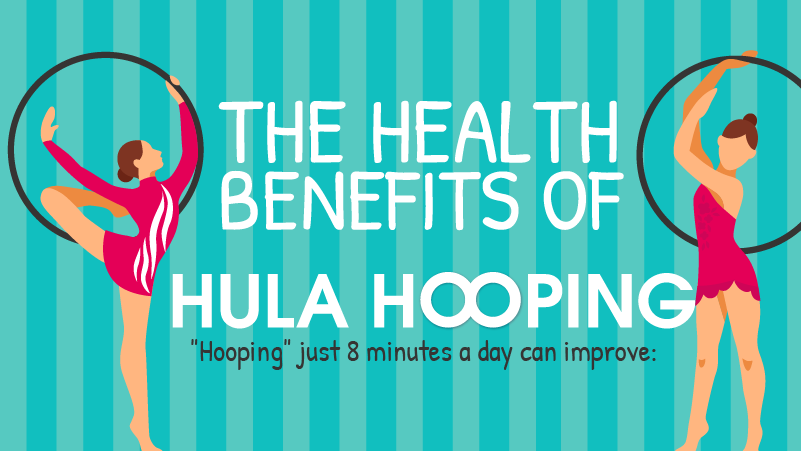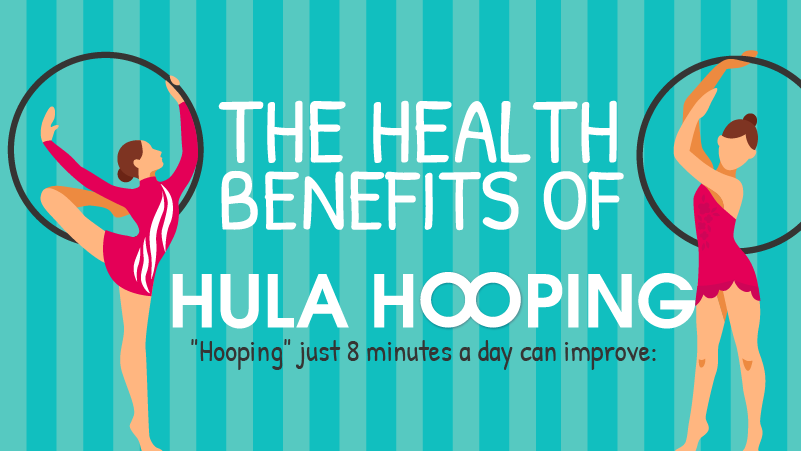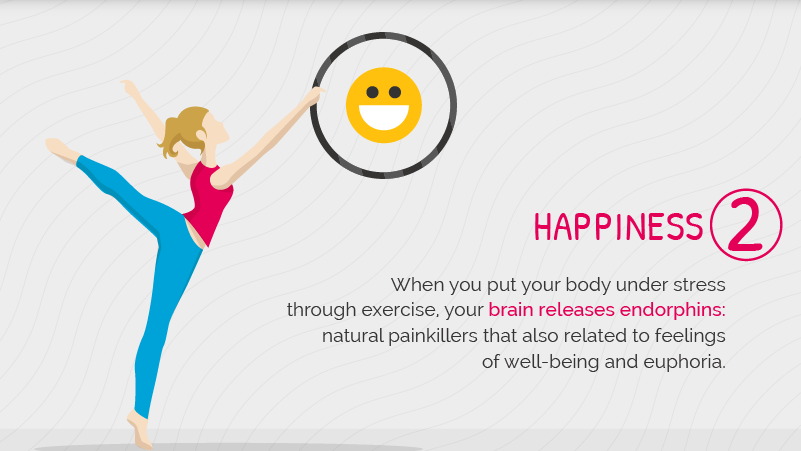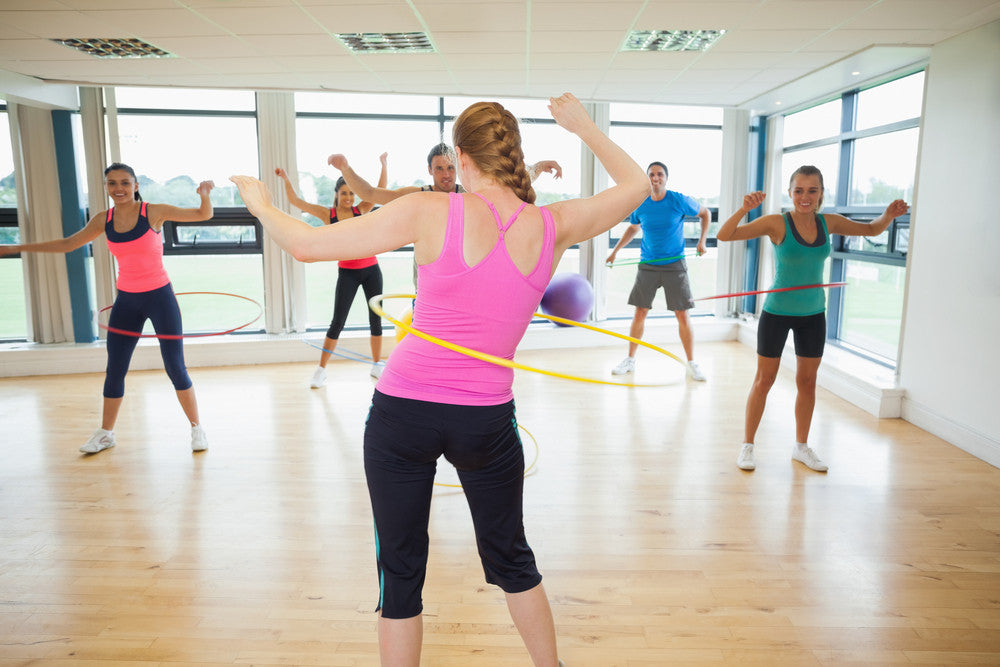
The Health Benefits of Hula Hooping

Since their arrival on the scene in the 1950s, hula hoops have long been a fun way to exercise. And with the rise of circus fitness in recent years accompanied by the rising art of hoop and aerial dance, hula hooping is more popular than ever!
But did you know that besides being a fun, relatively inexpensive way to work out--hula hooping also comes with a lot of health benefits as a full-body workout tool?

1. Coordination
Like many sports, hula hooping requires and helps build hand-eye coordination. To keep a hoop spinning around your waist requires your brain to work hand-in-hand with your muscles to maintain a steady directional movement. It’s like patting your head and rubbing your tummy, but with a hula hoop! What’s more -- hula hooping requires you to dig in your feet a little to maintain balance and stability, so it also helps improve your balance overall. If you really want to challenge your brain, you can branch outside of hula hooping in one direction around your waist and learn a variety of hula hoop tricks, including hand hooping, doubles (hooping with two hoops), and more. Training your body to do these tricks will strengthen your neural pathways and result in a marked improvement in your coordination.

2. Happiness
It’s a well-known fact that exercise helps your brain release endorphins, which are related to feelings of safety, well-being, and intense happiness. But hula hooping can promote an even higher level of euphoria by allowing you to reconnect with your childhood -- many people say hooping helps them engage with a more spontaneous, playful side of themselves that they might have to keep under wraps at work or in a more aggressive form of exercise. Because hula hooping is associated with childhood, it’s rare to see someone without a smile on their face while they hoop -- you are more likely to feel more vibrant and youthful after hula hoop use. Many even describe a boost in self-confidence and self-expression after regular hula hooping. The repetitive motion of hooping and body engagement can also act as a form of meditation for some, allowing your workout to be a calming, restorative exercise that promotes happiness, well-being, and peace.

3. Heart Health
It might seem strange, but hula hooping is actually fantastic cardiovascular exercise. If you hate running or jumping on a machine at the gym, a hula hoop is a great way to get cardio in each week. The heart is the muscle that needs more of a workout than any other part of your body, and you can feel your heart rate start to race the more vigorously you hula hoop. If you want to make your workout more intense and push your heart rate up, consider multiple hoops or hula hooping tricks that work your whole body. Cardiovascular exercise can help promote lifelong health and reduce the risk of heart disease -- who knew that a plastic hula hoop could give your heart such a workout?
4. Spine Strength
It might not seem like it, but it’s pretty impossible to move your hips without engaging your spine. The rhythmic motion of the hoop back and forth increases blood flow to your spine, which can improve your spine strength and flexibility if done regularly. Your spine is a powerful, yet delicate instrument in your body and giving it a proper workout and stretch without overdoing it (which hooping is perfect for) is a prime way to promote spine stability in the long term. Hooping is also a low impact activity, so if you have a bad back or sensitive spine, it’s a great way to strengthen your spine and promote back health without risking injury to yourself.

5. Core Strength
Given that hula hooping primarily occurs around your waist, it should come as no surprise that it’s a great way to work out your core. Regular hooping can strengthen your waist and stomach muscles. If your waist is a problem area for you, hula hooping can be an excellent way to target this area without running, executing specific aerobic exercises, or dieting. Hula hooping uses your abdominal muscles (upper and lower) as well as your back muscles, all of which can help burn abdominal fat and tone your midsection. When you’re rocking that six-pack in your bikini body, you can thank your hula hoop.

6. Muscle Tone
Though it may be a killer core workout, hula hooping doesn’t just work out your abdominal region. It can easily be a full body workout, exercising up to thirty different muscles throughout your body. As you wiggle around to keep the hoop moving, you’re using nearly thirty different muscles and special workouts can help target particular areas. The American Council on Exercise found that waist hooping can burn approximately 400 calories per hour. Though waist hooping alone works out a multitude of muscles, you can also hoop on your chest, arms, feet, hands, shoulders, hips, and more. This can make your workout more intense and target areas you want to focus on.
There are a multitude of hula hooping moves, and you can even buy Special DVDs with workout programs designed to help maximize your full-body hula hooping workout. Depending on your posture, the placement of your feet and hips, and the part of your body circling the hoop, you can work everything from your abdomen to your glutes to your biceps. Here are three simple moves you can try at home to get a killer hoop workout.

Now, grab your hoop and have some fun!


1 comment
Great article! Thanks for this. I love hooping and after many years of not hooping, I’m back at it at the age of 65! Love, love, love it!
Bea Good :)
Leave a comment
This site is protected by hCaptcha and the hCaptcha Privacy Policy and Terms of Service apply.